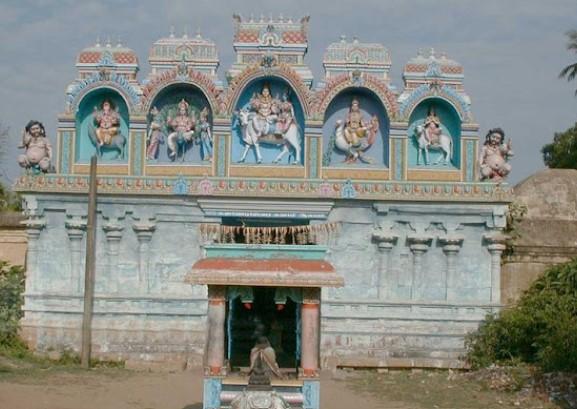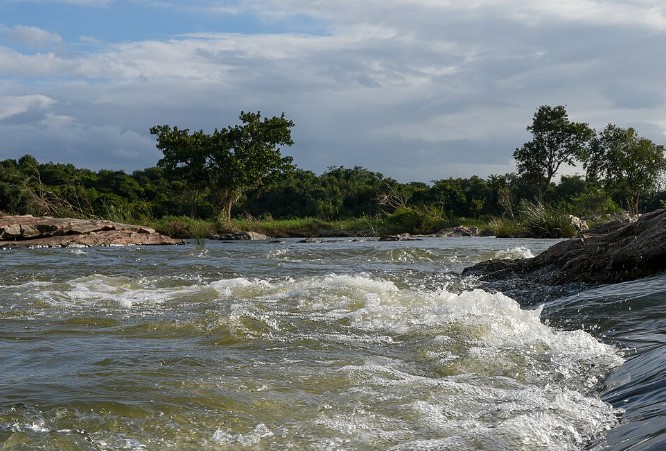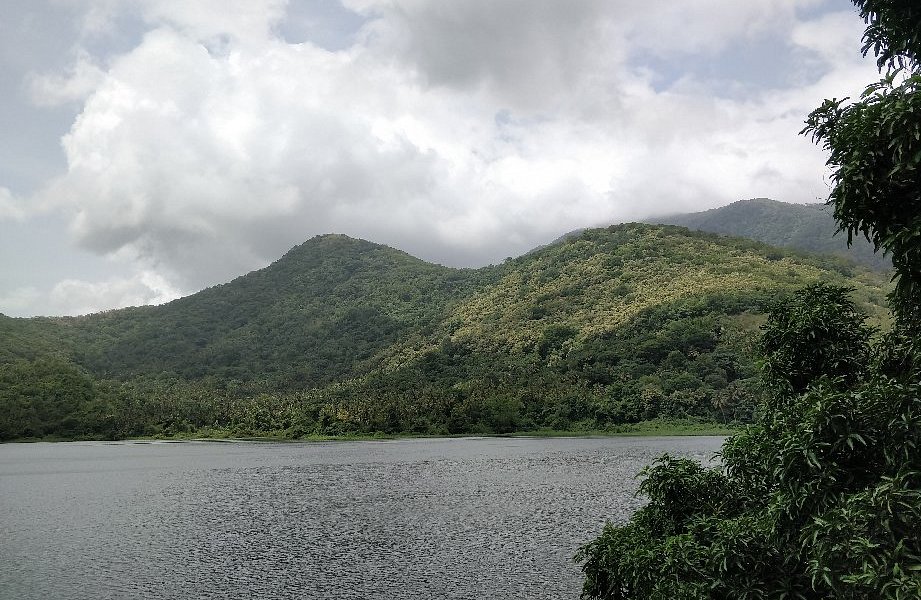The Swarnapureeswarar Temple, located in Semponarkoil (historically known as Tiruchemponpalli, Lakshmipuri, and Indirapuri), is the 159th Devara Paadal Petra Shiva Sthalam and the 42nd Shiva Sthalam on the southern bank of the river Cauvery in Chozha Nadu. This revered Hindu temple is dedicated to Lord Shiva, who is worshipped here as Swarnapureeswarar, with his consort Suguntha Kundalambikai.
Built during the 6th to 7th centuries, the temple is one of the Maadak Koils constructed by King Kochengat Cholan. The east-facing temple features a single corridor and lacks a traditional main tower (Rajagopuram), instead having a beautifully designed arch at the entrance. Notably, there is no flag post within the temple complex. The last consecration ceremony, known as Kumbabishekam, was conducted in 2007.
This temple is significant as one of the 276 Devara Paadal Petra Sthalams, glorified in the early mediaeval Tevaram poems by the revered Tamil Saivite Nayanars, Tirugnanasambandar and Tirunavukkarasar. Located approximately 10 kilometres east of Mayiladuthurai, it is accessible via the road to Tharangampadi, making it a key spiritual site for devotees and pilgrims alike.
History of the Temple
- There are six stone inscriptions in this temple dating back to the periods of Chola Kings Kulothungan, Rajathirajan and King Saraboji of Tanjure.
- The historical names of this place are Lakshmi Puri, Indirapuri and Skandapuri.
- There are few reasons why this place gets the name Sembanarkoil.
- One is that Chola kings built and renovated this temple hence it gets the name “Sembian Palli” (“Sembian” is another name for Cholas and “Palli” means village).
- Another reason is that the roof of Lord Shiva’s sanctum tower was earlier believed to have been made using many gold (“Sempon” in Tamil) sheets.
- Another reason is that the Swayambu lingam of this temple once sparkled like gold. For this reason, the lord is also praised as “Sri Semponpalliyar”.
- Usually, the village around the temple does not have a separate name and is referred to by the name of the temple itself. Following this norm, the village here is called Sembanar Koil.
PURANIC SIGNIFICANCE:
Daksha and Dhaakshayani
The legend of the Swarnapureeswarar Temple centres around Daksha, known as Dakshaprajapathi, the son of Lord Brahma. His daughter, Dhaakshayani, was married to Lord Shiva. Despite this, Daksha intentionally failed to invite Lord Shiva to a grand Yagna he performed in Thiru Pariyal Veerattam, a nearby location. In defiance of her husband’s wishes, Dhaakshayani decided to attend the Yagna to confront her father about his mistake.
The Disrespect and Curse
Upon arriving, Daksha, filled with arrogance, not only humiliated Dhaakshayani but also disrespected Lord Shiva. In her fury, Dhaakshayani cursed her father that his Yagna would not succeed. She returned to Lord Shiva and requested him to intervene and disrupt the Yagna.
Lord Shiva's Intervention
- It is believed that in Sembanarkoil, Lord Shiva created Veerabadrar and Badrakali and sent them to Thiru Pariyal Veerattam to destroy Daksha and the Yagna. Veerabadrar punished the guests, including Vishnu, Brahma, Indra, Suryan, and Chandran. In a fit of rage, he beheaded Daksha and cast his head into the fire. Desperate, Daksha pleaded for mercy from Lord Shiva.
- The Blessing of Forgiveness
- Lord Shiva then appeared at the Yagna, pardoning the guests and ultimately forgiving Daksha. To save him, Shiva placed a goat’s head on Daksha’s body. The idol of Veerabadrar alongside Daksha can be seen in the temple corridor.
Dhaakshayani’s Penance
Dhaakshayani sought relief from the sin of being born to someone who opposed Lord Shiva. To atone, she performed penance surrounded by fire (referred to as “Panchakni”). Pleased with her devotion, Lord Shiva appeared before her, blessed her with the name “Suguntha Kundalambikai,” and took her to Mount Kailash.
Other Legends
Mahalakshmi's Penance
It is believed that Goddess Mahalakshmi performed penance at this site to marry Lord Mahavishnu. Lord Shiva blessed her during this time, leading to the name Lakshmipuri.
Indiran's Worship
The place is also called Indirapuri because Lord Indra worshipped Lord Shiva here to obtain the weapon Vajrayutham, which he needed to defeat the demon Vruddhasuran.
Skandapuri
The temple is further known as Skandapuri, as Lord Murugan (Skanda) is said to have worshipped Lord Shiva here to seek blessings to vanquish the demon Tharakasuran.
Notable Devotees
Various deities and sages, including Lord Mahavishnu, Lord Brahma, Veerabadrar, Indra, Sage Agasthiar, Sage Vasishtar, Kaveri, Nagakanyas, Kuberan, and the Ashtadikbalakars, are believed to have worshipped Lord Shiva in this sacred place. Additionally, Rathi Devi prayed here to regain her husband, Manmathan.
Lakshmipuri:
It is noteworthy that Sri Mahalakshmi performed penance on Lord Shiva of this temple to have the hands of Vishnu as her Lord. Hence, the place has the name Lakshmipuri.
Indirapuri:
It is also called Indirapuri as Indira worshipped Lord Shiva here to get the weapon Vajrayudha to kill demon Vruddhasura.
Kandapuri:
The third name of the place is Kandapuri as Lord Muruga worshipped Lord Shiva to destroy demon Tarakasura.
Murugan in the form of Shiva advised Parvathi:
A story goes that when Lord Shiva refused to receive Mother Parvathi back after visiting her father’s Yajna against his advice, Lord Muruga came to the Mother in the form of Shiva and imparted good advice in this place. Based on this story, Lord Muruga appears in the temple with an Akshamala. Shiva appeared in this place only as Veerabadra.
Different Names of Mother:
Mother Sugantha Kundalambika is praised by many names - Pushpalaki, Dhakshayani, Suganthalaki, Suganthavana Nayaki and Maruvar Kuzhali.
Shiva naming Parvathi as Sugantha Kundalambikai:
- Daksha, son of Brahma, gave his daughter Dhakshayani to Lord Shiva in marriage. Yet he intentionally failed to invite Lord Shiva for a yajna he performed. Mother Dhakshayani wanted to correct her father by visiting the yajna. But clouded by arrogance and pride, Daksha humiliated his own daughter and her Lord. Furious Dhakshayani cursed her father that his yajna would not go on. She also begged her Lord to destroy the yajna.
- Lord Shiva created Veerabadra, Badrakali and others to destroy the yajna along with Daksha. Dhakshayani to wash off her sin as the daughter of a Shiva opponent performed penance here sitting around five types of Agni-fire. Lord, pleased with her penance named her Sugantha Kundalambikai and took her to bless devotees along with him in the temple.
People worshipped Shiva here:
Agasthiar, Brahma, Vasishta, Naga Kanyas, Ashtadikbalakas, Gubera worshipped in this place. Rathi worshipped Lord Shiva here to get back her husband Manmatha. Lord Vishnu too had worshipped Lord Shiva here.
ADMINISTRATION:
The Swarnapureeswarar Temple in Semponarkoil is administered by the Hindu Religious and Charitable Endowments Department of the Government of Tamil Nadu.


